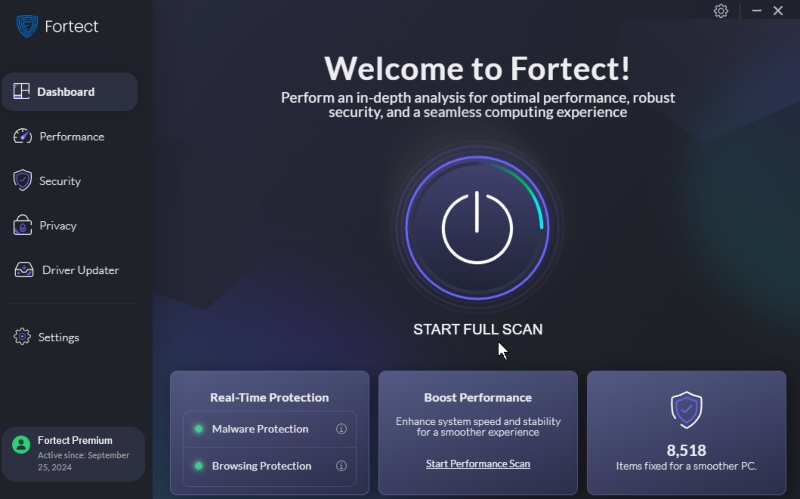How to Protect Your System From Botnet Attacks
Botnet attacks have become a significant threat to computer systems and networks. These attacks involve a compromised computer network controlled by cybercriminals, often without the users’ knowledge. Protecting your Windows PC from botnet attacks is crucial to maintaining security and preventing potential damage.
We’ll explain botnet malware and how it works and provide practical steps to safeguard your system.
What is Botnet Malware and How Does it Work?

Botnet malware is malicious software that creates a network of infected computers known as a “botnet.” Once a “computer” is infected, it becomes part of this network and is controlled remotely by cybercriminals. Botnets can be used for various malicious activities, including launching Distributed Denial of Service (DDoS) attacks, stealing personal information, and sending spam emails.
Botnets are spread through software vulnerabilities, phishing emails, or malicious downloads. Once a computer is infected, the botnet software runs in the background, often without the user’s awareness. User cybercriminals can then use the compromised machines to execute commands, perform illicit activities, and spread the infection further.
How to Prevent Your Windows PC from Botnet Attacks
Keep Windows System Updated
Regular updates to the Windows operating system are essential for fixing security vulnerabilities that botnets could exploit. Updates often include patches and fixes for known security issues, reducing the risk of infection.

- Check for Updates:
- Go to Settings > Update & Security > Windows Update.
- Click Check for updates and install any available updates.
- Enable Automatic Updates:
- Ensure automatic updates are enabled so your system receives the latest security patches without manual intervention.
Use Multi-Factor Authentication
Multi-factor authentication (MFA) adds a layer of security by requiring a second form of verification, which makes it more difficult for attackers to gain unauthorized access to your accounts and system.
- Enable MFA for Microsoft Accounts:
- Visit the Microsoft Account Security page.
- Sign in with your Microsoft account and go to Advanced Security Options.
- Enable Two-step verification and follow the setup instructions.
- Use Authenticator Apps:
- Download and set up an authenticator app like Microsoft Authenticator or Google Authenticator for additional security.
Don’t Open Unknown Email Attachments
Email attachments from unknown or suspicious sources can contain malware that could infect your computer and add it to a botnet. Being cautious with email attachments helps prevent such infections.
- Verify Sender:
- Before opening any attachments, ensure the email is from a trusted source.
- Use Email Security Software:
- Employ email security solutions that scan attachments for potential threats before opening them.
Cybersecurity Awareness Training

Understanding common cybersecurity threats and best practices can help you recognize and avoid potential risks, reducing the likelihood of falling victim to a botnet attack.
- Participate in Training:
- Engage in cybersecurity training programs or online courses to learn about the latest threats and how to protect against them.
- Stay Informed:
- Follow cybersecurity news and updates to stay aware of emerging threats and trends.
Enhance Your Anti-Malware Defense
Adequate anti-malware protection is essential for identifying and blocking malware, including threats from botnets. A vigorous anti-malware solution helps prevent infections and minimize damage.
Consider using Fortect, which offers comprehensive malware defense. Fortect automatically scans for various types of malware, including botnets and other cyber threats. It provides real-time updates and resolves issues while optimizing your PC for better performance.

Download and install Fortect now.
Types of Botnet Attacks
- Distributed Denial of Service (DDoS) Attacks involve overloading a network or website with excessive traffic to render it unavailable.
- Credential Stuffing: Using stolen credentials to gain unauthorized access to accounts.
- Spam and Phishing Campaigns: Sending large volumes of spam emails or phishing attempts to deceive recipients.
- Data Theft: Stealing sensitive information from compromised systems.
- Crypto Mining: Using infected devices to mine cryptocurrencies without the owner’s knowledgeowner’susion
Conclusion
Protecting your Windows PC from botnet attacks involves implementing proactive measures. Keeping your system updated, using multi-factor authentication, being cautious with email attachments, participating in cybersecurity training, and enhancing your anti-malware defense are all crucial steps.
By following these best practices, you can significantly reduce the risk of botnet infections and safeguard your computer against cyber threats. Stay vigilant and proactive to maintain a secure digital environment.




